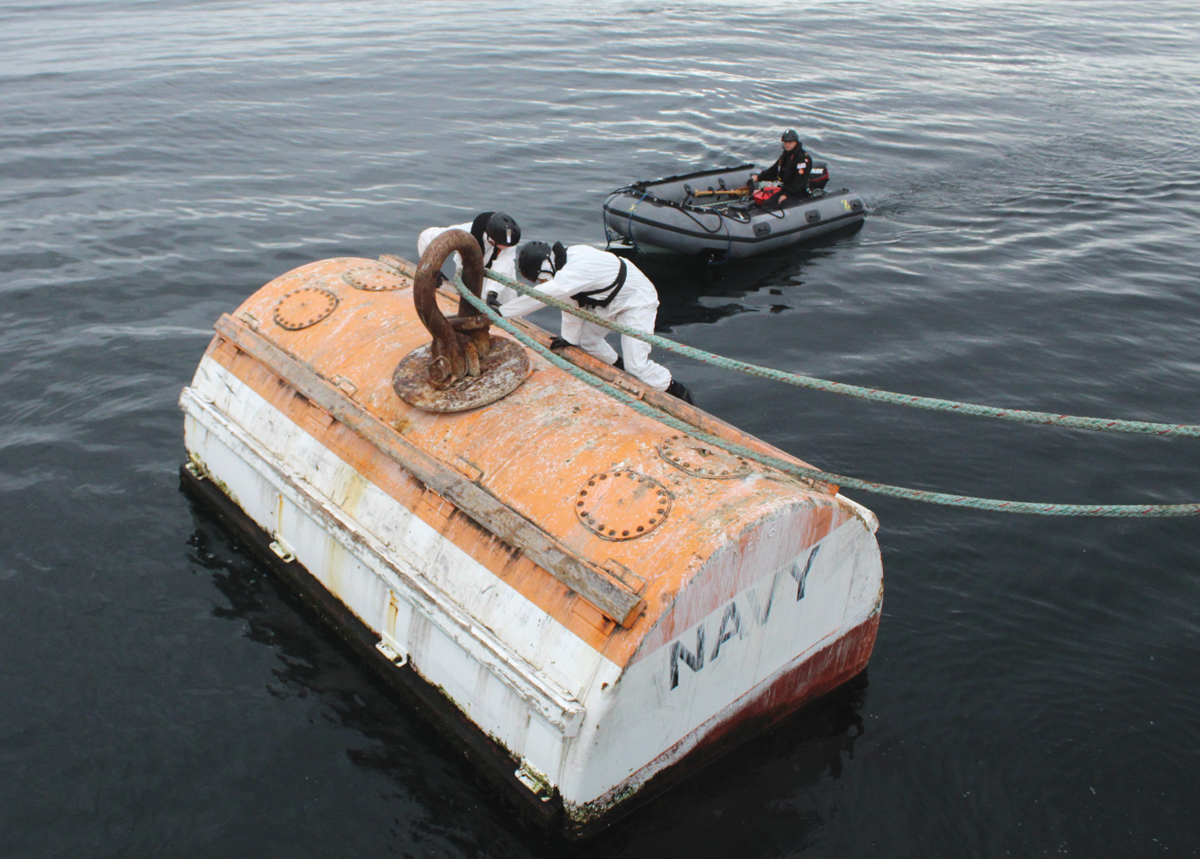Learning about Buoys
By Lookout on Oct 05, 2021 with Comments 0

Moose 62 is secured to a mooring buoy as part of a unique training opportunity. Photo by SLt Wilson Ho
SLt Wilson Ho
UPAR – HMCS Vancouver
––
A group of junior officers undergoing the at-sea portion of their Phase IV training recently performed an evolution atypical for the class of vessel upon which they were embarked.
“Coming to a buoy” is routinely conducted on Maritime Coastal Defence Vessels Canadian Patrol Frigates as part of readiness training.
However, a regular Standard Operating Procedure was recently created for the Orca Class training vessels to be able to safely complete a mooring. The procedure permitted Moose 62 to successfully come to a mooring buoy on Sept. 27 near the entrance to Esquimalt Harbour.
Coming to a buoy is an evolution where a ship is secured by attaching the ship’s cable or a hawser to a mooring buoy, which itself is secured by a heavy pendant and embedded anchors on the seabed. It is through the pendant that the forces of wind, tide, current, and waves, acting upon the vessel, are transmitted to the bottom where they are absorbed.
It was a slow-time evolution for the students and crew. Led by the senior boatswain’s mate, Sailor First Class (S1) Lee Mihalcheon, the day started off with a detailed brief, followed by a full layout of all the equipment necessary to come to a buoy.
Once everything was deemed in working order, two buoy jumpers were lowered into the ship’s zodiac. When Moose 62 was in position close to the mooring buoy, the buoy jumpers were ordered onto the buoy and received the hawser.
Passing through the mooring buoy ring, the hawser was sent back to the ship, and the buoy jumpers were ordered off the buoy. Moose 62 then slowly backed away, putting strain on the mooring buoy. Once complete, the hawser was taken off the mooring buoy and the evolution was secured.
“This was an excellent development opportunity for the entire ship’s company,” said S1 Mihalcheon. “Everyone had a chance to participate and learn something new, and all the training objectives were met.”
The embarked students, part of New Waterford Division, Naval Warfare Officer Course Phase IV, will complete their sea phase on Oct. 1. Upon returning to the Naval Officer Training Centre Venture, they will receive a posting to either Canadian Pacific Fleet or Canadian Fleet Atlantic where they will join their first warships.
––––
Filed Under: Top Stories
About the Author:






